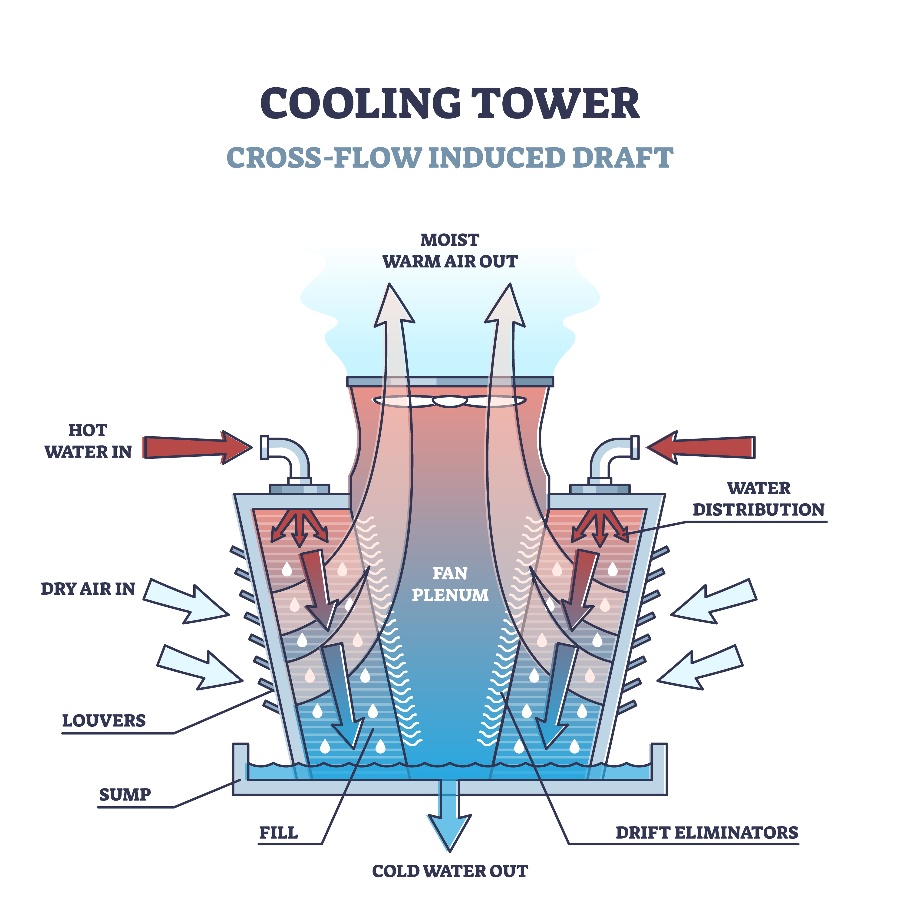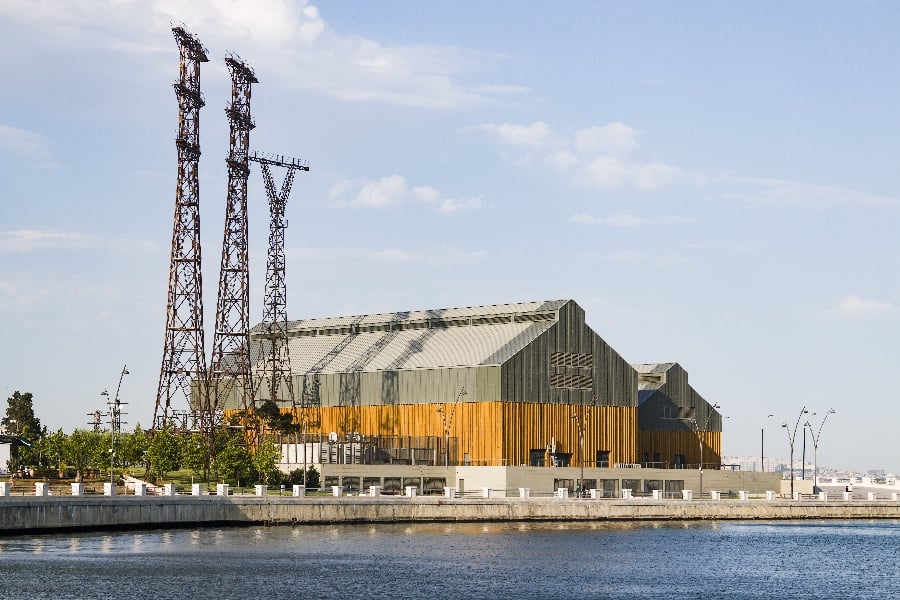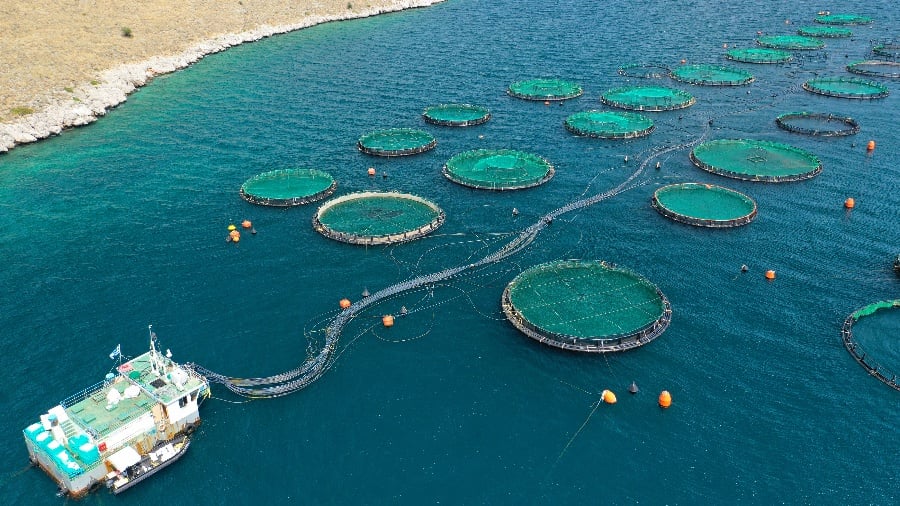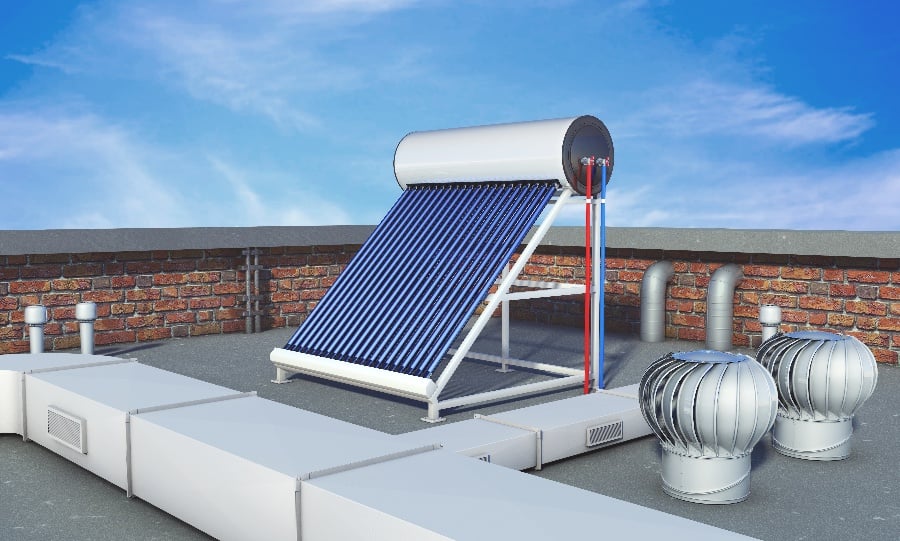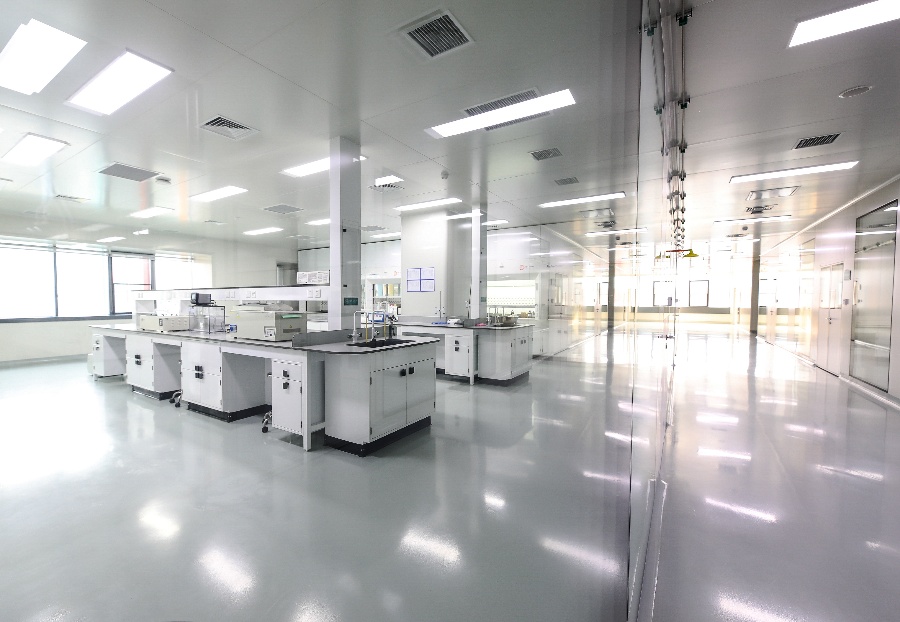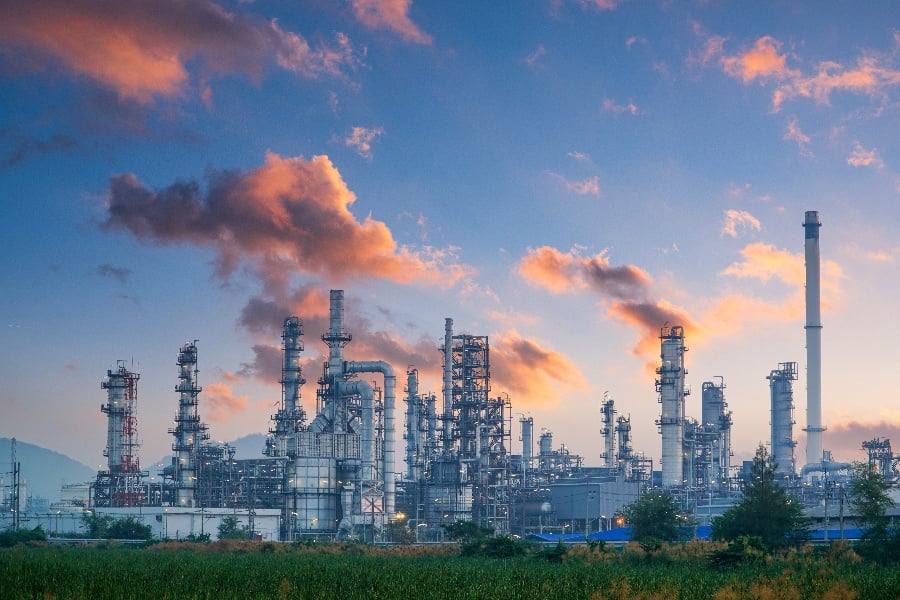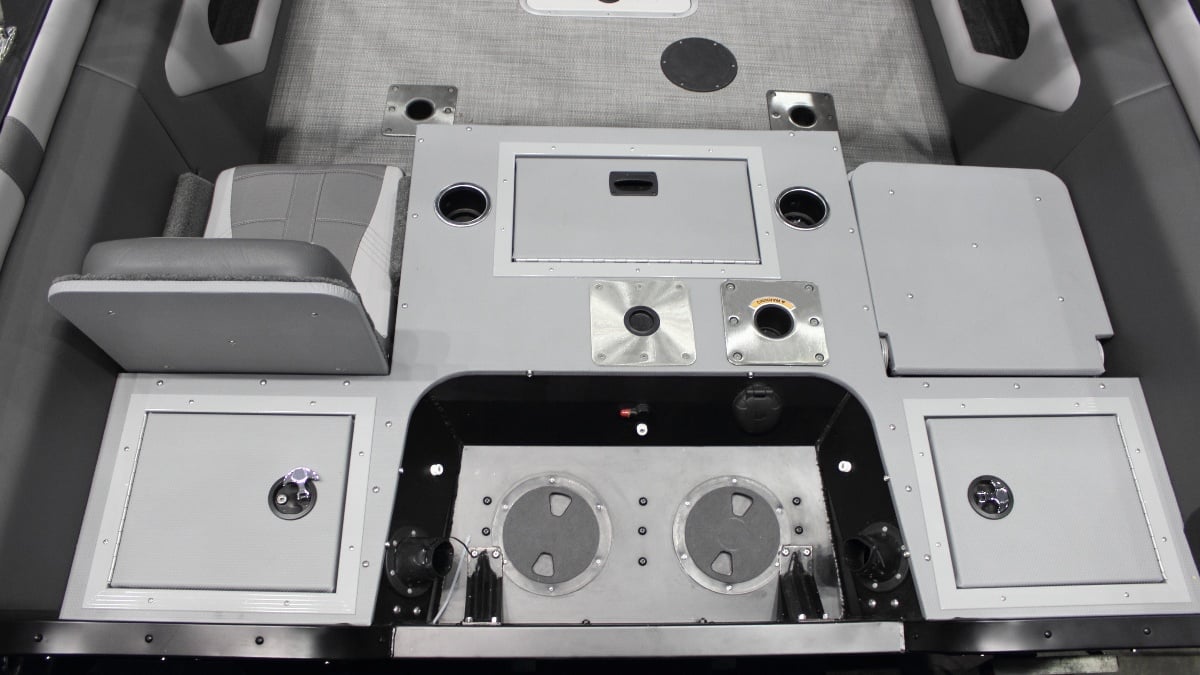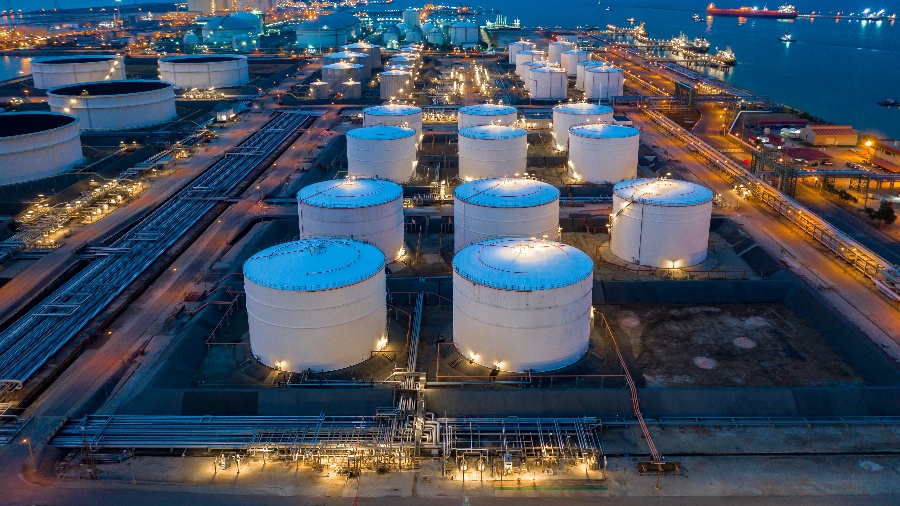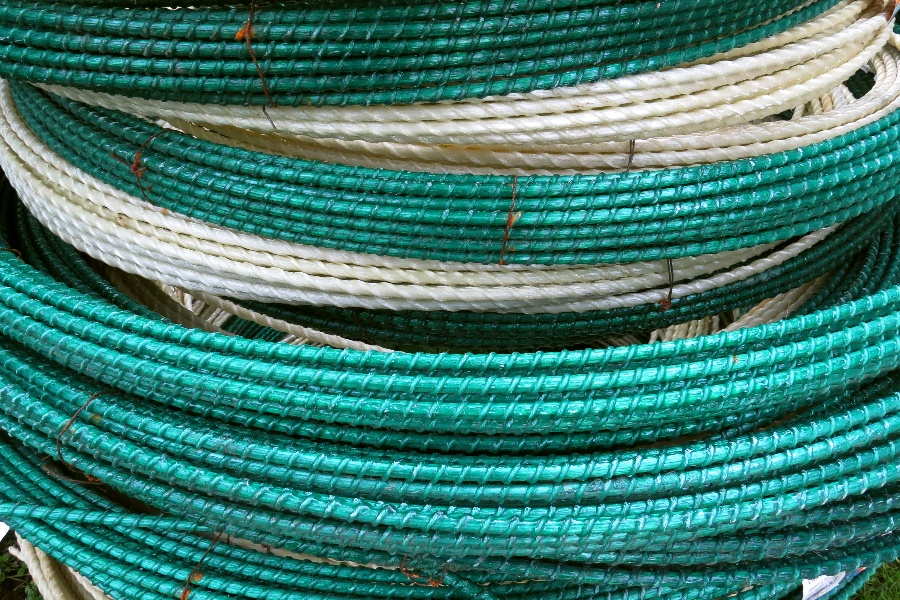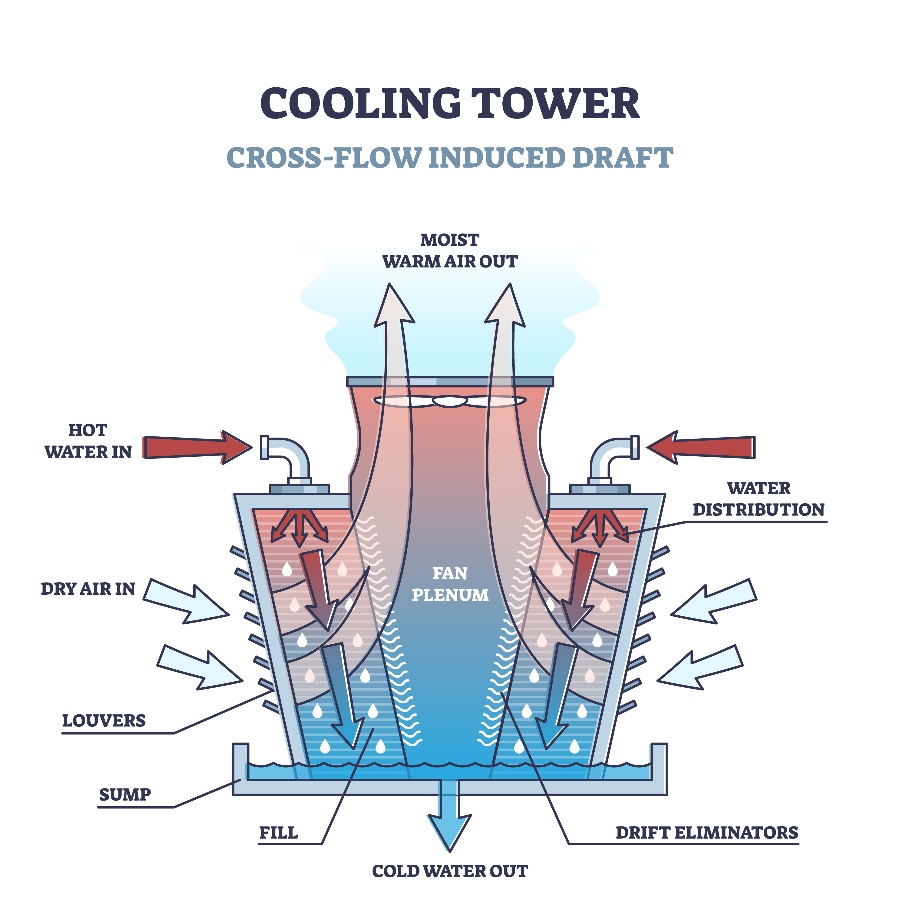
A cooling tower is a heat exchanger that reduces water temperature when air and water are brought into contact with one another. In addition to evaporative cooling, towers may also use other methods, such as air-to-air exchange or forced draft to improve efficiency.
Air-cooled towers, for example, use fans to draw in outside air and circulate it over the heated water, while forced draft towers use fans to force air through the tower.
Regardless of the type of tower, they all operate on the same principle. This principle entails removing heat from the water. This heat removal is accomplished through the evaporation of water that is recirculated through the cooling tower. This process releases the latent heat of vaporization, which causes the water to cool. This process can be used to remove heat from a variety of sources, including refrigeration systems, power plants, and chemical plants. As a result, cooling towers play an essential role in many industrial operations.
Engineers must carefully consider the material when designing a cooling tower for their application.
Cooling Tower Material Factors
The selection of materials for cooling towers has a significant impact on both initial costs as well as long-term operation and maintenance costs. In addition to the obvious variables such as cost and availability, there are a number of other factors that should be taken into account when choosing materials for industrial cooling towers.
The most important of these is the intended usage of the tower. For example, suppose the tower will be used in a region with high levels of environmental pollution. In that case, it will need to be constructed from materials that are resistant to corrosive agents. Similarly, if the tower will be subject to high winds or seismic activity, it will need to be able to withstand significant loads without damage.
In many cases, corrosion is one of the primary mechanisms by which materials fail in cooling towers. As such, an important consideration when selecting materials is their corrosion resistance in the presence of various chemicals that may be present in cooling tower water.
Another essential factor to consider is the thermal conductivity of the material, as this will affect how efficiently heat can be transferred from the water to the air. When making decisions about what materials to use in constructing industrial cooling towers, it is important to consider a wide range of variables in order to select the best possible option.
Benefits of FRP for Industrial Cooling Towers
In the past, cooling towers were typically constructed from concrete, wood, or metal. However, these materials have a number of drawbacks. They are susceptible to corrosion and degradation from exposure to the elements, and they are also heavy and difficult to transport. As a result, there has been a growing interest in the use of fiber-reinforced polymers (FRPs) for cooling tower construction.
FRPs are composites that combine the strength of fibers with the stability of polymers. This combination of properties makes them an ideal material for exposed applications such as cooling towers. In addition, FRPs are lightweight and easy to work with, which reduces production costs and enhances on-site productivity. As the use of FRPs in cooling tower construction becomes more prevalent, it is clear that this material has a bright future in the HVAC industry.
Maintenance
When it comes to industrial cooling towers, routine cleaning is a must in order to maintain efficiency. Scale build-up and biological growth can quickly inhibit the performance of a cooling tower, so it's important to handle these issues accordingly.
The build-up and algae on FRP cooling towers can be washed or brushed away with ease, while concrete cooling towers are porous and tend to hold onto undesirable particles and growth. This fact means that not only do concrete cooling towers require more frequent cleanings, but the amount of labor required to complete those cleanings is also much more when compared to an FRP tower.
Repair
Any industrial cooling tower, no matter the material it is made out of, will require maintenance at some point. The frequency of this maintenance will depend on a number of factors, such as the environment it is in and how often it is used. However, regardless of these factors, every cooling tower will eventually need to be repaired or replaced. If any part of an FRP cooling tower becomes damaged, the identified components can be removed and replaced.
The repairs can be carried out quickly and easily, with the whole process taking just a few hours. In contrast, concrete cooling towers are much more challenging to maintain. Concrete structures are prone to cracking and corrosion over time, and repairs can be both costly and time-consuming. This is especially true in corrosive environments that can cause substantial damage to concrete structures.
Fire Resistant
Fire hazards are a significant issue with wooden towers because of the added expenses incurred by a company for higher insurance premiums and the installation of a fire protection system. FRP resins used in cooling towers are specially formulated to retard fire spread and classified as having a flame spread rating of 25 or less based on ASTM test E-84. This property means that in the event of a fire, the resin will not contribute to the spread of flames.
Corrosion Resistant
Corrosion and chemical decay are severe problems for a variety of different types of structures. They can cause extensive damage, compromising the integrity and stability of the structure. In some cases, this can even put people's safety at risk. Fortunately, FRP is an excellent material for preventing both corrosion and chemical decay.
The glass fibers and resins used in FRP are natural insulators that inhibit corrosion. In addition, FRP elements are constructed so that their surfaces are non-porous, preventing chemicals from penetrating and damaging the pieces from the inside out. Furthermore, resins can be designed for specific levels of chemical resistance. As a result, FRP is an ideal material for protection against corrosion and chemical decay.

